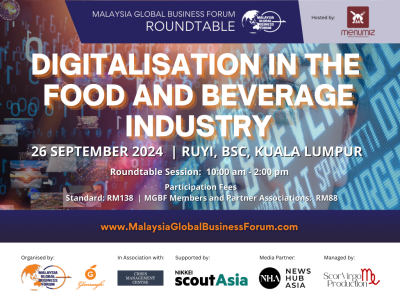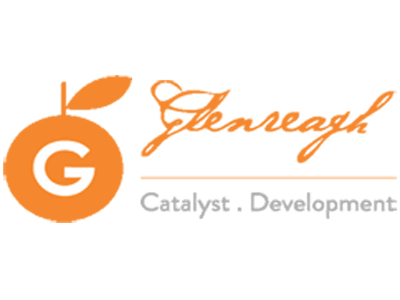From Oct 29 to Nov 4, 2015, delegates from 17 WTO member-states met in Geneva, Switzerland, for the tenth round of negotiations on the Environmental Goods Agreement (EGA). Although Malaysia is not a party to the negotiations, it is worthwhile to take a look at the process and consider the potential implications of the EGA on world trade.
The EGA is a plurilateral agreement that aims at removing barriers to trade in environmental or ‘green’ goods, in a broader effort to protect the environment and mitigate climate change.
In the long term, the EGA is envisaged as a ‘living agreement’ that will expand to add new products in response to changes in technology and eventually address environmental services and non-tariff barriers to trade. However, it currently relates only to environmental goods.
 The EGA was launched in July 2014 by 14 WTO member-states – Australia, Canada, China, Costa Rica, the EU, Hong Kong, Japan, Korea, New Zealand, Norway, Singapore, Switzerland, Chinese Taipei and the US. The negotiating parties set out to build on a list of 54 environmental goods on which members of the Asia-Pacific Economic Cooperation (APEC) committed to reduce import tariffs in 2012.
The EGA was launched in July 2014 by 14 WTO member-states – Australia, Canada, China, Costa Rica, the EU, Hong Kong, Japan, Korea, New Zealand, Norway, Singapore, Switzerland, Chinese Taipei and the US. The negotiating parties set out to build on a list of 54 environmental goods on which members of the Asia-Pacific Economic Cooperation (APEC) committed to reduce import tariffs in 2012.
Over the course of numerous negotiating rounds, the parties established and reviewed the environmental goods categories (energy and resource efficiency, air pollution control, renewable energy equipment, solid and hazardous waste management, etc) and nominated relevant products for inclusion in these categories. Three more member-states (Israel, Iceland and Turkey) joined the negotiations during this period.
In more recent rounds, negotiating parties focused on product-by-product discussion to refine and secure a list outlined in August 2015. Reportedly, in bilateral and plenary sessions, delegates analysed over 1,000 products and examined over 450 possible tariff lines for inclusion.
The discussions from Oct 29 to Nov 4, 2015 resulted in a ‘draft final list’ of potential products whose tariffs will be lowered under the EGA. The Chair is said to have circulated the list in advance of the eleventh round of negotiations, from Nov 30 to Dec 4, 2015, for review by all 17 parties.
Notable areas of debate
The latest round continued negotiations on sensitive products proposed for inclusion in the list, as well as issues relating to approximately 100 ‘ex-outs’ nominated for inclusion in the EGA.
‘Ex-outs’ are national tariff codes built off more general descriptions of goods provided by the World Customs Organisation’s Harmonised System (HS) tariff lines. They describe specific products or product groups that are particular to individual countries with a level of detail not captured by HS codes.
The debate over competing ‘ex-outs’ suggests that negotiating parties are approaching the task of finalising the environmental goods list with care, in order to ensure that these are indeed beneficial to the environment.
The compiled list of EGA product nominations has not been officially released. But in September 2015, an environmental organisation ‘leaked’ a product nomination list from the EGA negotiations in April and questioned the ‘greenness’ of approximately 100 goods on the list.
 Some sources say that these controversial nominations have since been dropped from the ‘final draft list’. Indeed, many of the products included in the April list were criticised due to the potential for certain manufacturing products (general electronic hardware) to be used in non-environmentally friendly ways. The response has been to use ‘ex-outs’ that single out specific products within tariff lines so that non-environmentally friendly products are unable to benefit from the tariff cuts.
Some sources say that these controversial nominations have since been dropped from the ‘final draft list’. Indeed, many of the products included in the April list were criticised due to the potential for certain manufacturing products (general electronic hardware) to be used in non-environmentally friendly ways. The response has been to use ‘ex-outs’ that single out specific products within tariff lines so that non-environmentally friendly products are unable to benefit from the tariff cuts.
Another issue reportedly deals with the relationship between the current EGA list and the APEC Environmental Goods List on which it is based. Although the EGA list appears to be significantly longer than the 54 products in the APEC list, some negotiating parties have pointed to the fact that the inclusion of a products on the APEC list obliges parties to lower such tariffs to 5%.
In this regard, some negotiating parties are concerned with the full elimination of duties on the tariff lines identified in the APEC Environmental Goods List, arguing that lowering tariffs to zero was not the original objective of the EGA.
Nevertheless, this raises the question of whether additional or alternative approaches would be more effective in securing the EGA’s over-arching goal of combating climate change. Though the nomination process and relevant criteria (if any) for product eligibility have remained opaque throughout the EGA talks, reports indicate that ‘environmental credibility’ has been the key consideration in agreeing on which goods to include.
In addition to the use of ‘ex-outs’, negotiating parties could have considered relying on already-established certification schemes and oversight bodies, such as those used in the oilseeds sector.
Such an approach could ensure that goods included in the provisional list that were criticised, such as biodiesel, are included if sourced sustainably. As a result, ‘green’ commodities such as sustainable palm oil, soybean and sugar could rightfully be covered by the agreement.
Although it is unclear whether such goods will be included in the final version of the EGA, given that the negotiating parties intend for the EGA to be a ‘living agreement’, there may still be opportunities in the future for WTO member-states (like Argentina, Brazil, Indonesia and Malaysia) with a genuine interest in the relevant commodities to influence the list of goods covered.
Moving on
Some WTO member-states appear to have opted not to participate in the EGA negotiations due to fears that they would unnecessarily open their markets to competing manufactures of relevant products. In the short term, this may benefit such countries because initially, the EGA will apply in accordance to the ‘Most-Favoured Nation’ principle once a ‘critical mass’ of WTO member-states have agreed to participate.
In the context of the WTO Information Technology Agreement, the ‘critical mass’ is considered to have been met when participants of a plurilateral agreement account for approximately 90% of trade in the relevant products. At this point, the tariff reductions in the participating member-states go into effect for all member-states. Accordingly, non-signatory member-states will benefit from the tariff reductions once the EGA hits the ‘critical mass’.
However, in the long term, it is likely that, through other bilateral discussions or consultations, other WTO member-states will be encouraged or pressured into joining the EGA in return for other trade concessions.
If that is the eventual outcome for a non-signatory WTO member-state, such a country would then have missed the opportunity to participate in the negotiation of the EGA, and to ensure that products relevant to its export industry are included.
In Malaysia’s case, a critically-important green export product is sustainable palm oil. It is unclear whether palm oil is currently included in the list of EGA products, given certain concerns about the potential for unsustainable palm oil to also benefit from the agreement. Although one solution would be to tie certain products to sustainability certification requirements, there is no indication that this has been proposed yet within the EGA context.
Tying the use of a particular certification scheme, such as the Malaysian Sustainable Palm Oil standard, would have increased the recognition and strength of such a standard, and allowed sustainable palm oil to benefit from reduced tariff rates and from the priceless label of ‘green product’.
FratiniVergano
European Lawyers

Services
Stakeholder mapping, analysis, engagement and communication needs to be detailed to avoid business losses or even worse, a crisis. How can you do this effectively to prevent failure? ...
Data-driven business decisions have never been as crucial, especially in this era. MGBF leverages off, technology, experience and market presence to aid businesses in making accurate decisions. ...
MGBF provides comprehensive strategic advice and results-focused solutions to solve clients' problems in business-government relations so they can focus on their core business. ...
A critical business challenge is meeting the right decision-makers and potential buyers through the best channel and platform. How will you improve your business competency? ...
Upcoming Events
MGBF founding chairman Nordin Abdullah and UMW Toyota president Datuk Ravindran K. will delve into the convergence of automotive innovation and environmental sustainability in Penang, Sarawak, Johor and Pahang.
Hosted by menumiz™ – an end-to-end restaurant management system – this roundtable will feature a case study presentation and a panel session to discuss the latest digital trends, challenges, and opportunities within the food and beverage sector.
In this episode of 'A Working Lunch with Nordin', MGBF's founding chairman, Nordin Abdullah, will host this discussion focusing on the biggest threats and opportunities for businesses as we look to manage change in the South China Sea.
This MGBF Roundtable will focus on regional food security issues and trends in the regional supply chain, and trade regulations and policies, including a new geopolitical tool i.e., weaponisation of supply chains.
MGBF In The News
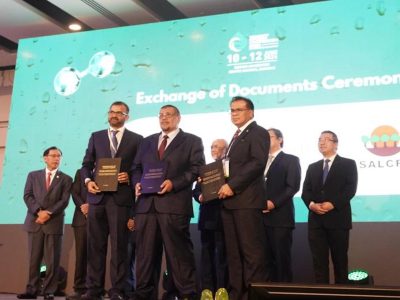
Planet QEOS, KIS BlOCNG San Bhd, and the Sarawak Land Consolidation and Rehabilitation Authority (SALCRA) have officially signed a tripartite memorandum of understanding (MoU) to establish a collaborative framework aimed at producing bio-hydrogen via the Steam Biomethane Reforming (SBMR) Process. The MoU was signed by Planet QEOS executive chairman Dino […]
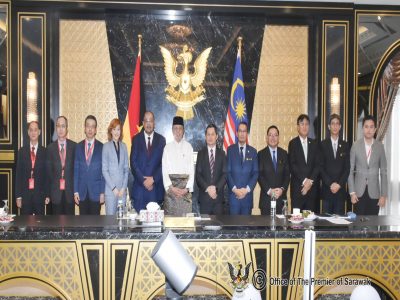
Planet QEOS and China Machinery Engineering Corporation (CMEC) are interested in investing RM10 billion to co-develop advanced Megawatt peak (MWp) agrovoltaic in Baram, to further boost Sarawak’s green energy initiative and food security. Sarawak Premier Datuk Patinggi Tan Sri Abang Johari Tun Openg was briefed on Friday by both the […]
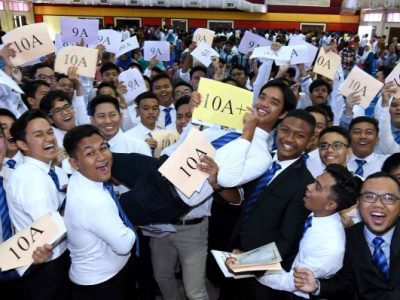
Last week SPM results came out, 373,974 aspirants who have been waiting patiently over the last few months would now know their fate. Some 10,109 have received all A’s, the golden standard of academic success and the ticket to those looking to study the “more advanced” subjects in university. Proudly, […]

The classic knee-jerk reaction is to say, fire the coach, change the leadership of associations, and reduce the funding till they start performing better. This kind of negative reinforcement may work for kindergarten children, but we are dealing with high-performance adults – individuals much further along in their psychological and […]
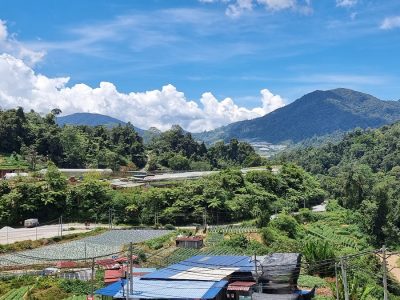
Since its earliest tea plantations in 1929, Cameron Highlands has grown to become a key player in the agricultural landscape of Malaysia, producing 40 per cent of all vegetables grown. Despite Malaysia shifting its economic focus away from agriculture, the industry remains imperative for food security and the livelihoods of […]
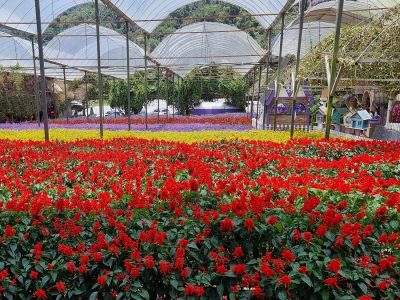
Although at first glance the travel industry and the agricultural sector appear to have nothing in common, they actually share more than meets the eye. The economic benefits of tourism to the agricultural sector can be multiplied several times over. “Tourism brings the end consumers closer to the source, which […]

The Malaysia Global Business Forum (MGBF) recently held a high-level roundtable themed ‘Designing the Future of the Digital Economy’, attended by industry leaders and business associations. The guest of honour was Yang Berhormat Syerleena Abdul Rashid, the Member of Parliament (MP) for Bukit Bendera in Penang. The MP’s Special Session […]

The Malaysia Global Business Forum (MGBF) will be hosting a roundtable on ‘Designing the Future of the Digital Economy’ on 23 February 2023. It is the culmination of the first three MGBF Exclusive Roundtable Series titled ‘The Evolving Threat Matrix in the Digital Economy’ held throughout 2022. According to the […]
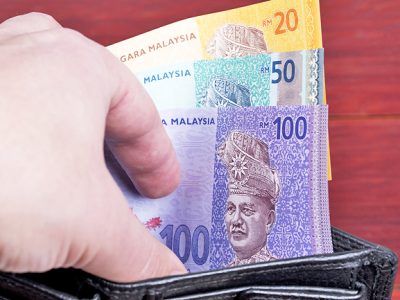
The Founding Chairman of the Malaysia Global Business Forum (MGBF), Nordin Abdullah, today spoke on Bernama TV’s leading English talk show, The Brief, hosted by Jessy Chahal, on the topic of a stable political reality and what that means for the Malaysian economy. Nordin said, “The first thing that it […]

More than 1,100 years ago, Muhammad ibn Musa al-Khwarizmi was developing the mathematical formulas that we know today as algorithms which now have become so intertwined with the business fortunes of global media giants and the very fabric of geopolitics. A series of recent high level international reports have revealed […]

KSK Land has been recognised by the Malaysia Global Business Forum (MGBF) for its role in attracting high net-worth individuals to Malaysia post-pandemic. The first challenge in investor attraction is “selling” the country. In the context of Asia, Malaysia is competing with some very established investment destinations. The second […]
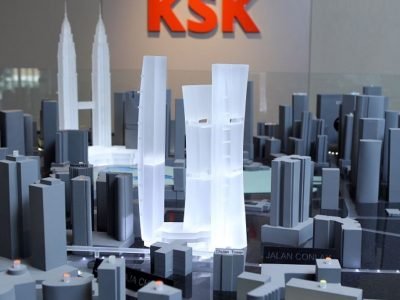
Malaysia, in particular Kuala Lumpur, continues to position itself as a regional centre to do business, educate a family and enjoy a global lifestyle. One company, KSK Land, has taken the lead in positioning itself and the city of Kuala Lumpur as a property investment destination for the global citizen […]
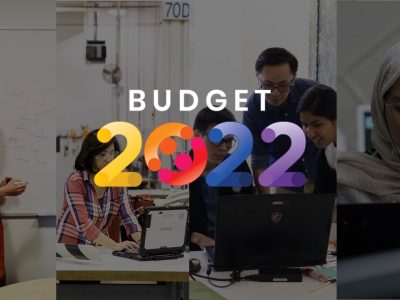
The upcoming budget represents an opportunity to build resilience in the critical sectors that will form the backbone of the country’s future-facing economic ambitions. This however needs to be achieved in the context of managing the community sectors most impacted by COVID-19 over the past two years. The Keluarga Malaysia (Malaysian Family) […]

Malaysia Global Business Forum (MGBF) has moved to support the creative economy as the overall economy moves into a recovery phase following the COVID19 pandemic. As a step in the direction of normalcy, the MGBF has agreed to host the art exhibition “I Know You’re Somewhere So Far” by one […]
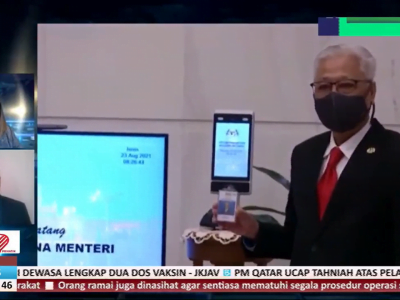
Congratulations to Datuk Seri Ismail Sabri Yaakob for taking up the mantle of the ninth prime minister of Malaysia. There is nothing normal about the situation; it could not have been scripted but it has kept the spectrum of media, mainstream and social, gripped. The first order of business for […]
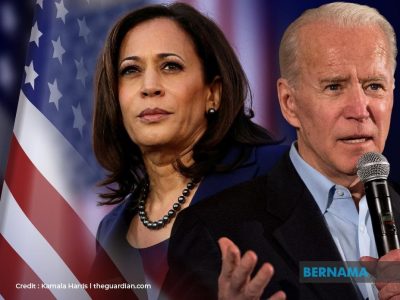
In a stirring speech to the nation, President Joseph R. Biden, Jr. stamped his brand of leadership on the presidency, in his first act as the 46th president of the United State of America, it signaled several shifts. Perhaps the weather was foreboding with snow falling before the ceremony that […]
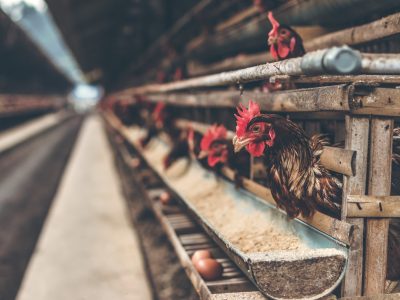
KUALA LUMPUR, 6 July 2022 – As the global economy continues to deal with unprecedented levels of disruption caused by the pandemic and the conflict between Russia and Ukraine, the convergence of energy security and food security issues has become a front-of-mind issue faced by policy makers and consumers alike. […]

KUALA LUMPUR, 23 June 2022 — Malaysia Global Business Forum (MGBF) ties up with scoutAsia to ensure that businesses are equipped with deeper regional insights. The past two years has seen a massive shift in the way businesses are conducted with digitisation, digitalisation and automation continuously being adopted to improve […]
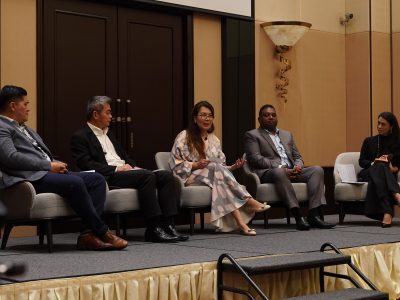
KUALA LUMPUR, 25 May 2022 – The Malaysia Global Business Forum (MGBF)’s exclusive roundtable on ‘Security Concerns in Critical Value Chains’ was held in a hybrid setting yesterday at the Eastin Hotel Kuala Lumpur. The guest of honour was Yang Berbahagia Tan Sri Dato’ Seri Rafidah Aziz, former minister of […]
 The EGA was launched in July 2014 by 14 WTO member-states – Australia, Canada, China, Costa Rica, the EU, Hong Kong, Japan, Korea, New Zealand, Norway, Singapore, Switzerland, Chinese Taipei and the US. The negotiating parties set out to build on a list of 54 environmental goods on which members of the Asia-Pacific Economic Cooperation (APEC) committed to reduce import tariffs in 2012.
The EGA was launched in July 2014 by 14 WTO member-states – Australia, Canada, China, Costa Rica, the EU, Hong Kong, Japan, Korea, New Zealand, Norway, Singapore, Switzerland, Chinese Taipei and the US. The negotiating parties set out to build on a list of 54 environmental goods on which members of the Asia-Pacific Economic Cooperation (APEC) committed to reduce import tariffs in 2012. Some sources say that these controversial nominations have since been dropped from the ‘final draft list’. Indeed, many of the products included in the April list were criticised due to the potential for certain manufacturing products (general electronic hardware) to be used in non-environmentally friendly ways. The response has been to use ‘ex-outs’ that single out specific products within tariff lines so that non-environmentally friendly products are unable to benefit from the tariff cuts.
Some sources say that these controversial nominations have since been dropped from the ‘final draft list’. Indeed, many of the products included in the April list were criticised due to the potential for certain manufacturing products (general electronic hardware) to be used in non-environmentally friendly ways. The response has been to use ‘ex-outs’ that single out specific products within tariff lines so that non-environmentally friendly products are unable to benefit from the tariff cuts.







